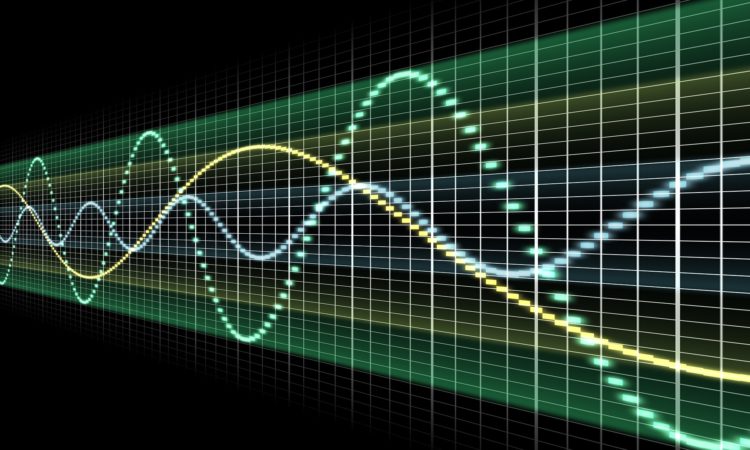When we visit a physician with any issues, generally we are advised to perform certain tests (for example: haemoglobin test, glucose test or urinalysis) to confirm about the nature/severity of problems. Usually, the sample (i.e. blood or urine) is collected, transported and tested at a central laboratory requiring a huge amount of time that could negatively impact a patient’s condition. Gathering information about patients quickly can help physicians make timely and informed decisions about patient care. Hence, Bed-side or Point-of-care (POC) testing is becoming increasingly popular as it provides real-time diagnostic results at the time of consultation. However, there is a growing need for balance between quick diagnosis and accurate results as the lab-based testing methods are usually more precise and require less amount of sample.
Acoustofluidic technologies, a discipline that integrates sound waves with microfluidics, are becoming increasingly popular to reduce sample (i.e. blood or urine) amount requirement during POC testing. The underlying principle of acoustofluidic is: Transport of fluids within a microfluidic platform can be controlled by careful application of sound waves. Using acoustofluidic-based technologies, analytes (i.e. haemoglobin, glucose etc.) from the sample can be segregated and generally fed into another instrument, which tends to be expensive, for characterization and signal readout. To overcome this limitation of characterization part, researchers at Duke University developed a cellphone-based platform that uses cell-phone camera to detect different colour-intensity recorded by analytes.
In this system, two different types of SiO2 nanoparticle were used for detection of analytes. These nanoparticles emit two different colours, such as red and green, when illuminated by a UV-light. Generally, the target analyte reduces the intensity of only the red probe and the intensity of the green probe remains the same, acting as an internal standard. So, whenever the analyte concentration increases, the red signal quenches and red:green ratio decreases as a result. Although the principle of signal generation is a simple process, the key challenge is to visualize the change in the presence of a very small amount of nanoparticle. If more amount of nanoparticle is used, then more sample amount will be required to induce the change in colour. To address this challenge, researchers used bulk acoustic waves that aggregate the small amount of nanoparticle to form a cluster and different colours can be observed (Figure 1a). In short, the cellphone-based platform mainly has three components: an acoustofluidic chip for hosting the sample and enriching the signal, a UV-LED lamp directed to the device to activate colour emission from nanoparticles, and a cellphone with a magnifying lens to capture fluorescence image. (Figure 1b).

To demonstrate the competency of the acoustofluidic platform, experiments were performed with red-green colour emitting nanoparticles using different amounts. A cellphone was used to capture real-time images. When acoustics were off, no colour was detected in presence of only red (SiO2@R) and green (G@SiO2) colour emitting nanoparticles. Similarly, when both red and green colour emitting nanoparticles were present i.e. SiO2@R & G@SiO2, nothing was visible in absence of acoustics. But, when the acoustics were tuned on, corresponding colours were observed. The panel on the side shows an evolution of colour when red-colour emitting nanoparticles were added gradually to the green-colour emitting nanoparticles (Figure 2).

Finally, haemoglobin (Hb) was used as an analyte to test the real-time monitoring of this technology. The green-colour emitting nanoparticles were modified so that they do not react with Hb, whereas red-colour emitting nanoparticles are supposed to reduce in intensity in the presence of Hb. The mechanism of the method is illustrated in Figure 3a. Experimentally, changes in colour was observed in the presence of different amounts of Hb, where the green colour was more prominent in the presence of higher amounts of Hb due to a reduction in intensity of the red colour (Figure 3b).

Bed-side testing is a growing need as it has the potential to revolutionize the quality of global healthcare sector through rapid testing, which is essential now more than ever. Currently, efforts are underway to develop small-size, fast-performing tests to detect COVID-19 that can be used in more non-traditional places where people can obtain results in minutes. This work is an important step towards the development of portable testing methods with low cost and high sensitivity. Hopefully, in future, many more research efforts will be directed to tackle this problem.
Reference:
- Zhang, L.; Tian, Z.; Bachman, H.; Zhang, P.; Huang, T. J. A Cell-Phone-Based Acoustofluidic Platform for Quantitative Point-of-Care Testing. ACS Nano 2020, 14, 3159−3169.
Cover image by Pete Linforth from Pixabay

